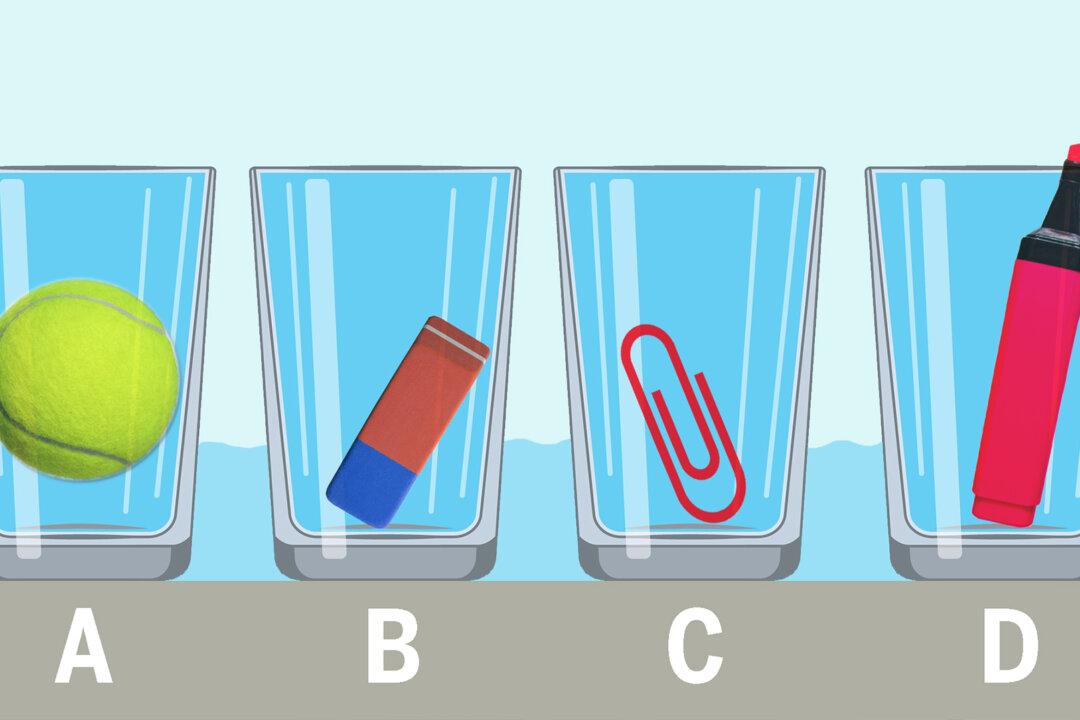An illustration depicting four glasses of water containing four different solid objects is stirring up bewilderment among netizens.
Each glass is the same size; each is filled almost to the brim with water; and each contains a different object. Glass A contains a tennis ball, glass B contains an eraser, glass C has a paper clip, and glass D has a red marker pen.





